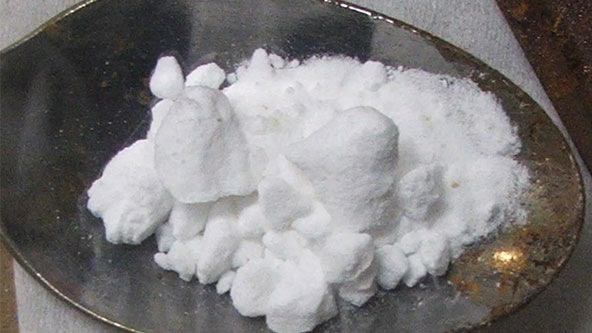What is Sodium Carbonate?
Sodium carbonate is a white crystalline or powdered chemical that is odorless with an alkaline taste. This material comes from the ashes of plants that grow in sodium-rich soil. Also known as soda ash, sodium carbonate is sometimes produced synthetically from salt and limestone.
This chemical can cause mild-to-severe health hazards and should be handled with care, no matter what type of workplace it’s in. Read on for our safety tips about handling and storing sodium carbonate safely, and how to manage accidental exposure.
Common Uses of Sodium Carbonate in the Workplace
This chemical is used in a variety of industries, with applications including:
- Glass manufacturing
- Water softening
- pH regulation for film developing agents
- Lyeing
- Cleaning and descaling agent
- Food additive (anti-caking, acidity regulator, and stabilizer)
Sodium carbonate is also used in taxidermy and as an additive to pools to raise pH.
Hazards Associated with Sodium Carbonate
If improperly handled, or in the event of accidental exposure, sodium carbonate can pose several hazards to your health and safety. Inhalation of this chemical can lead to adverse effects such as respiratory tract irritation, coughing, shortness of breath, and pulmonary edema.
Eye contact can cause permanent corneal injury and possible burns. If you use sodium carbonate or soda ash in the household, take care to avoid ingestion or inhalation of dust. Due to these potential hazards, sodium carbonate should be handled with care.
Sodium Carbonate Safety, Handling & First Aid
To protect your health while handling sodium carbonate, use splash goggles, gloves, a lab coat, and an approved dust respirator. In case of exposure to sodium carbonate, seek medical attention and follow these first aid guidelines:
- Inhalation - Seek fresh air. If victim’s breathing is difficult, administer oxygen. If breathing is absent, give artificial respiration and seek medical attention immediately.
- Eye Contact - Check for and remove contact lenses. Immediately flush eyes with plenty of water for at least 15 minutes. Seek medical attention.
- Skin Contact - Flush skin with plenty of water and cover any irritated skin with an emollient. Remove contaminated clothing. Get medical attention.
- Ingestion - Do NOT induce vomiting. Loosen tight clothing. Never give anything by mouth to an unconscious person. Seek immediate medical attention.
Storing & Disposing of Sodium Carbonate
Keep sodium carbonate in a cool, well-ventilated area away from any sources of moisture. Keep any container with this chemical tightly closed. Do not store above 24°C (75.2°F). This chemical must be disposed of in accordance with federal, state, and local environmental control regulations.
Learn More about Sodium Carbonate Safety in our MSDS Library
If you’re searching for official sodium carbonate MSDS information, you won’t find a more robust online library than the one offered here. Get safety information on all the potential health hazards in your workplace from the experts at MSDSonline.







